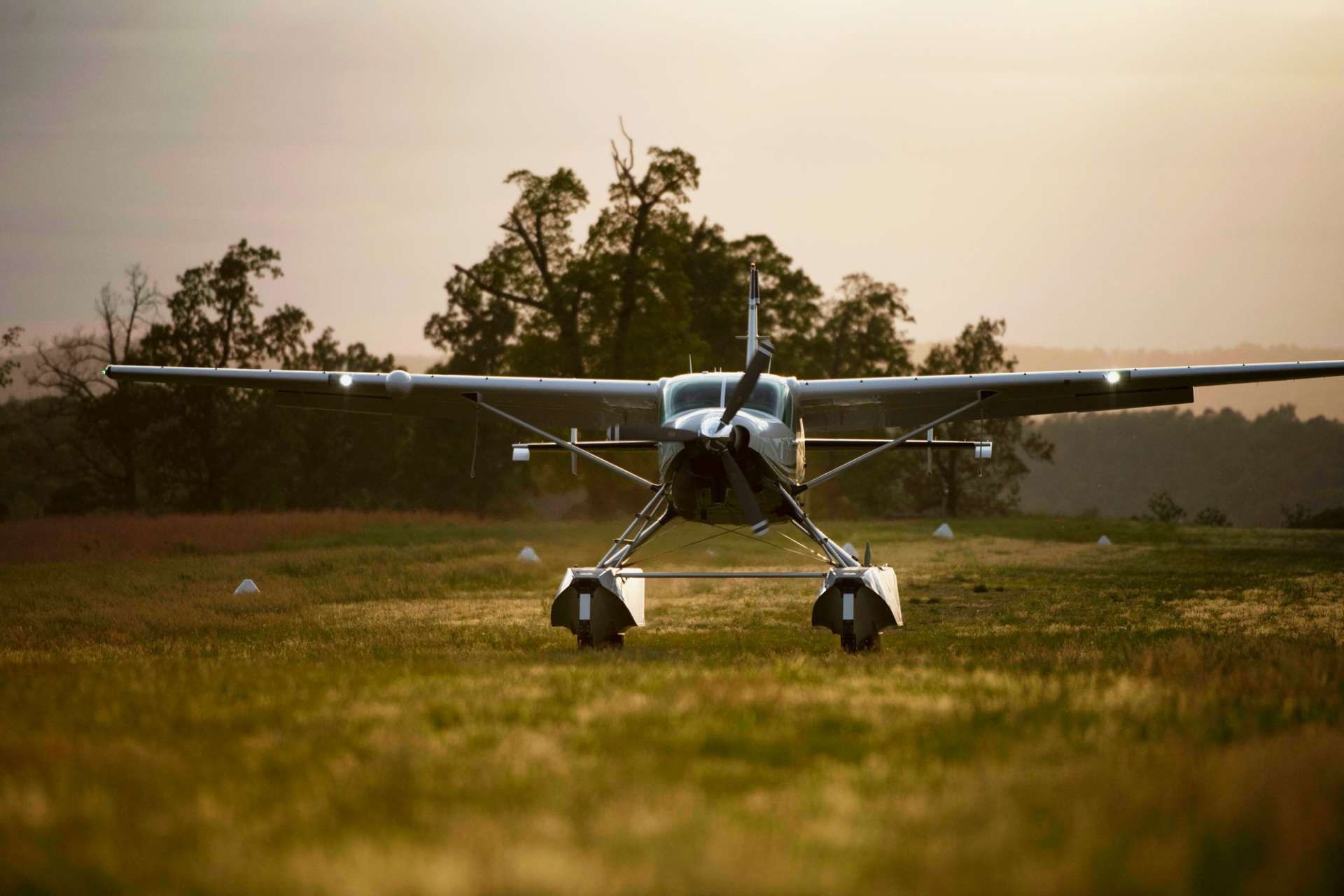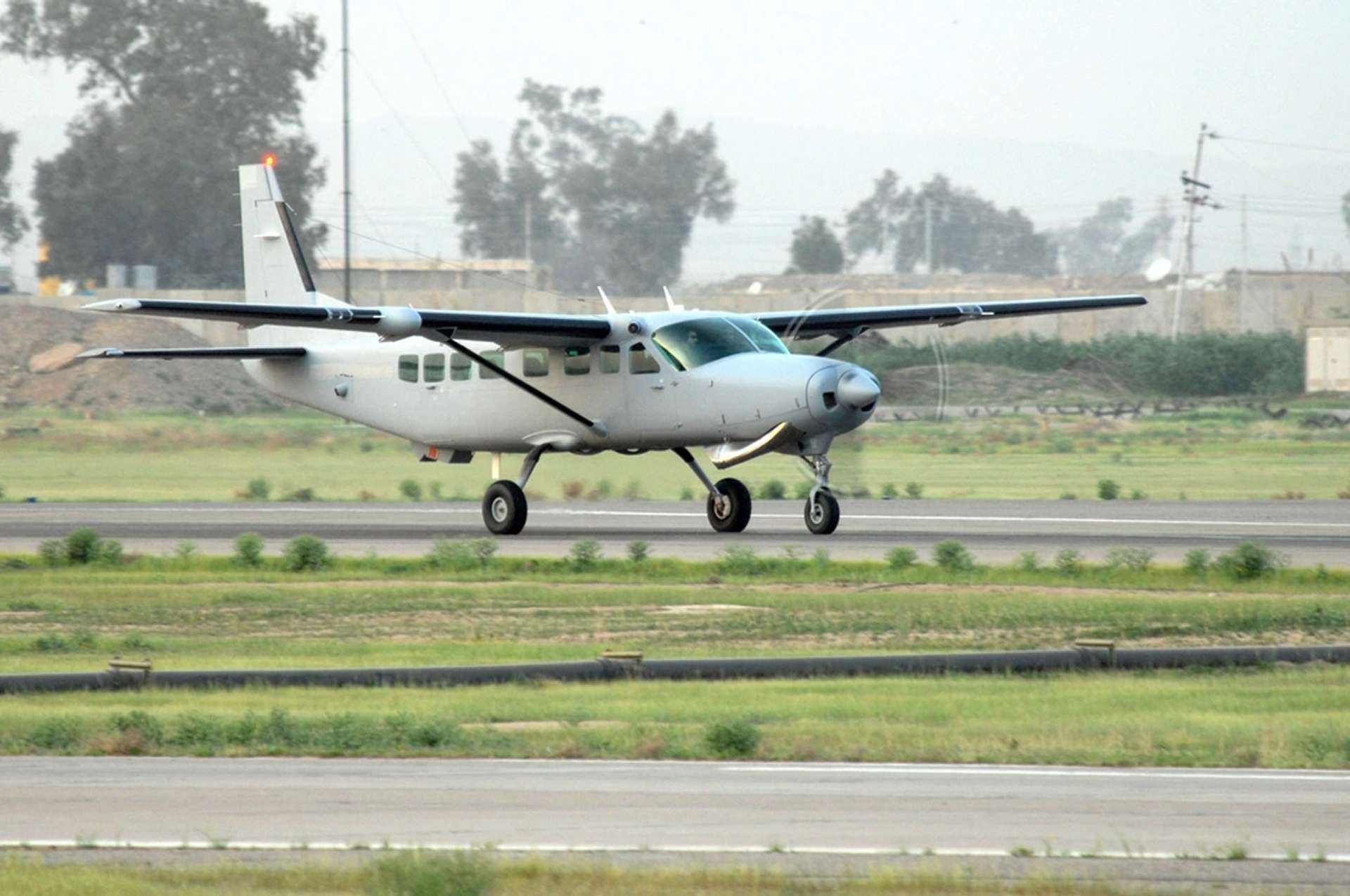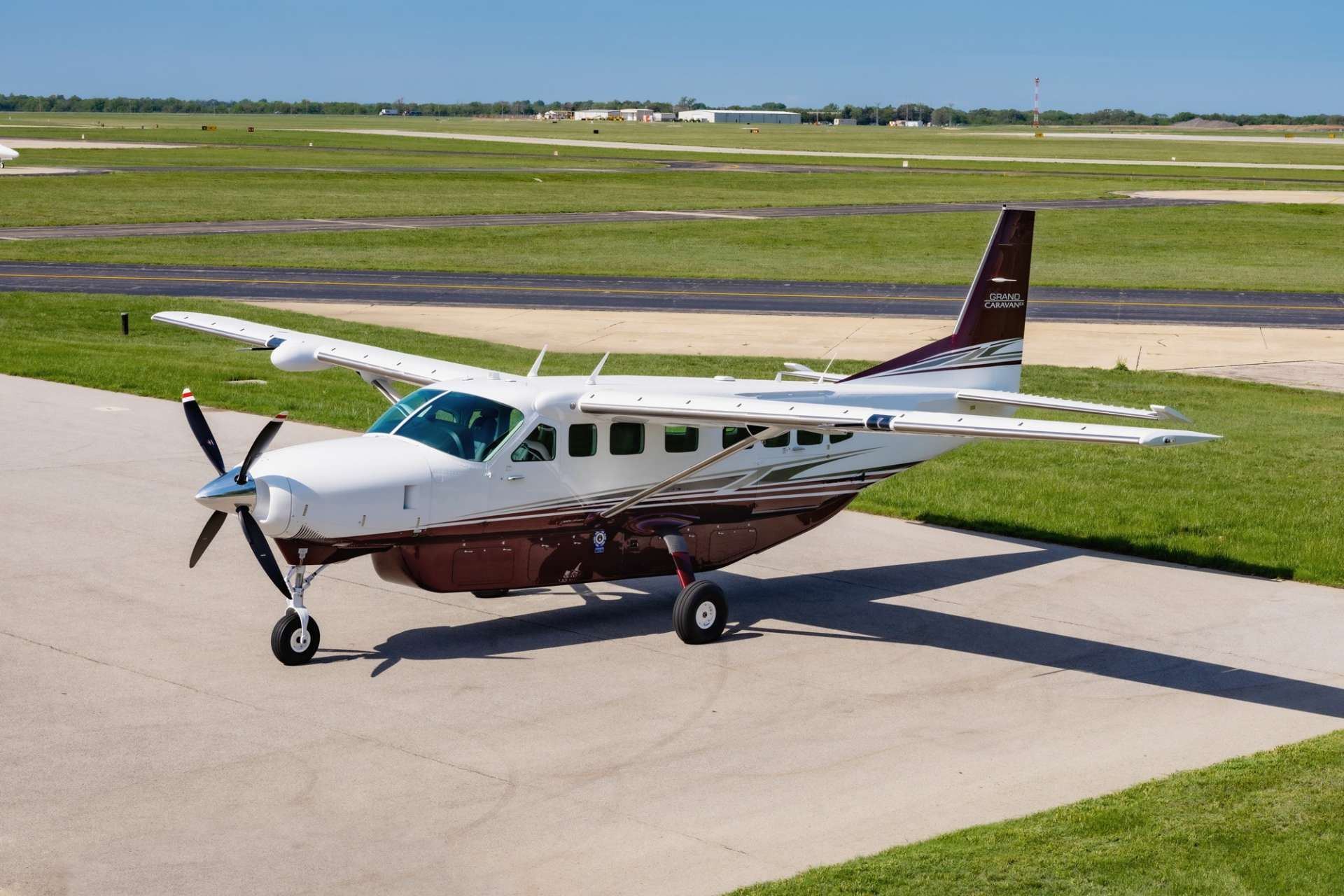Breaking News
Greek Special Forces eye two Cessna Caravan aircraft for full territorial coverage.
According to Onalert on September 8, 2024, the Greek Special Warfare Command is reportedly considering the acquisition of two Cessna Caravan light aircraft to fulfill diverse operational and training requirements, driven by the aircraft's adaptability and the relatively low costs associated with their purchase and operation.
Follow Army Recognition on Google News at this link

With a range of 1,980 kilometers, the Cessna 208 Caravan light aircraft can transport personnel or commando teams to any location within Greece, including across the archipelago. (Picture source: US DoD)
The proposed acquisition involves two different versions of the Cessna Caravan: one with wheels for conventional runways and an amphibian version equipped with floats for water surfaces. This dual capability would allow the aircraft to function in any part of Greece, including islands and islets that lack airport facilities.
The Greek Special Warfare Command, known as DEP, was established in September 2020 to enhance the capabilities of the country’s Special Operations Units. DEP is divided into two main components: the Special Forces Division, which includes commandos, marines, and paratroopers, and the Joint Special Operations Command (DDEE), which comprises the 13th Special Operations Command, the Naval Special Operations Unit, and the Special Operations Support Unit. Another element, the Airborne Special Operations Unit, operates from Megara Airport and utilizes helicopters, such as the Chinook (CH-47D) and NH-90, to carry out special missions.
The cost of each Cessna Caravan is estimated to be under €2 million, with maintenance and operating expenses expected to be comparatively low. Additionally, the training period for crews to operate these aircraft would likely be shorter, given that the Cessna Caravan is a light aircraft with fewer specific requirements than other military aircraft. This would facilitate a quicker integration into the existing fleet of the Greek Special Warfare Command.

The proposed acquisition involves an amphibian version equipped with floats for water surfaces, allowing the aircraft to function in any part of Greece, including islands and islets that lack airport facilities. (Picture source: Cessna)
The aim of acquiring these two Cessna Caravans is to supplement the existing fleet of helicopters within the recently formed Special Operations Air Squadron. The aircraft is intended to offer additional capabilities to the Special Operations Units as well as to the Greek Armed Forces more broadly. The Cessna Caravan’s capability to take off and land on short runways and its maximum range of 1,980 kilometers allow it to reach any location within Greek territory and return without refueling, which could be useful for operations throughout Greece, including its islands and remote areas.
The addition of these two aircraft is also anticipated to provide increased flexibility for the training of free-fall paratroopers. Currently, such training is conducted using larger transport aircraft like the C-130 and C-27, as well as Chinook helicopters. Introducing the Cessna Caravans for these purposes could help reduce associated costs, particularly considering the limited availability of current air assets that sometimes restrict day and night training opportunities for personnel of the Special Parachute Section. The Cessna Caravans could also be employed for surveillance, reconnaissance, and civil protection missions.
In recent months, Greece has aimed to expand its military capabilities by acquiring a range of advanced aerial assets, including MH-60L Direct Action Penetrator (DAP) Black Hawk helicopters, KC-135R Stratotanker aerial refueling aircraft, and F-35A Lightning II stealth fighters. The MH-60L DAP, a variant employed by U.S. Special Forces, will support Greece's Special Warfare Command in performing direct attack missions, providing close air support and precision targeting for special operations.
The acquisition of KC-135R Stratotankers will increase the operational range of Greek fighter jets, allowing them to undertake extended missions over the Eastern Mediterranean without the need for refueling. Additionally, the F-35A Lightning II, scheduled for delivery by 2028, will update Greece's fleet with stealth capabilities, supporting both national defense and NATO interoperability.

Introducing the Cessna Caravans for training could help reduce associated costs, particularly considering the limited availability of current air assets that sometimes restrict day and night training opportunities for personnel of the Special Parachute Section. (Picture source: US DoD)
The Cessna 208 Caravan, a utility aircraft produced by Cessna, first flew on December 9, 1982, after development began on November 20, 1981. The Federal Aviation Administration (FAA) certified the production model in October 1984. Initially developed as a freighter for FedEx under the name "Cargomaster," the design later extended into the 208B Super Cargomaster in 1986.
This version evolved into the 208B Grand Caravan, a passenger model. Since its introduction, the Caravan has undergone several design changes, including avionics upgrades and enhanced engine performance. By 2022, over 3,000 units had been produced, accumulating 24 million flight hours across various applications, such as flight training, commuter airlines, VIP transport, air cargo, skydiving, and humanitarian missions.
The design of the Cessna 208 Caravan features a high-wing, braced monoplane configuration and is powered by a single Pratt & Whitney Canada PT6A turboprop engine. The aircraft's cabin accommodates up to nine passengers and two crew members and has four access doors: one for each crew member, an airstair door on the right side, and a cargo door on the left.
The aircraft can be fitted with different types of landing gear, such as fixed tricycle gear, amphibious floats, or skis, for varied operational environments. It is available in multiple configurations, including high-density seating for up to thirteen passengers, mixed passenger and cargo arrangements, or as a cargo-only model. Certain versions are equipped with an underbelly cargo pod for additional storage, while others have been modified for skydiving operations.

Certain versions of the Cessna 208 are equipped with an underbelly cargo pod for additional storage, while others have been modified for skydiving operations. (Picture source: Cessna)
The AC-208 Combat Caravan represents a military variant of the Cessna 208, equipped with wing hardpoints and configured for Intelligence, Surveillance, Target Acquisition, and Reconnaissance (ISTAR) missions. Developed by ATK, it is armed with Hellfire missiles and has been employed by the Iraqi Air Force since January 2014, including in combat operations in Anbar province. The AC-208 has been provided to several countries in the Middle East and Africa through the Foreign Military Sales program, with Mali, Mauritania, Niger, and Burkina Faso among the potential operators. The Lebanese Air Force has also received AC-208 aircraft, with Northrop Grumman delivering two AC-208Bs and one RC-208B, an ISTAR variant, between 2009 and 2019.
The MC-208 Guardian is another military version of the Cessna Caravan, designed for multiple roles, including aerial surveillance, close air support, casualty evacuation, medical evacuations, air mobility, and precision strikes. This variant is capable of executing different mission types without needing reconfiguration. It was selected as a finalist in the United States Special Operations Command's (USSOCOM) Armed Overwatch program, which indicates its potential utility in various military operations.
The Cessna 208 Caravan is powered by a Pratt & Whitney Canada PT6A-114A turboprop engine, which produces 503 kW (675 shaft horsepower). The aircraft has a wingspan of 15.87 meters, a length of 11.46 meters, and a height of 4.53 meters. It has a maximum takeoff weight of 3,629 kilograms and a fuel capacity of 1,009 kilograms (1,257 liters). The Caravan achieves a cruise speed of 344 km/h (186 knots), which is faster than the Chinook helicopters currently in service with Greece. With a range of 1,980 kilometers (1,070 nautical miles), the aircraft can transport personnel or commando teams to any location within Greece, including across the archipelago, and has a service ceiling of 7,600 meters. The avionics suite includes the Garmin G1000, featuring an integrated digital automatic flight control system.

The Caravan achieves a cruise speed of 344 km/h (186 knots), which is faster than the Chinook helicopters currently in service with Greece. (Picture source: Cessna)


























